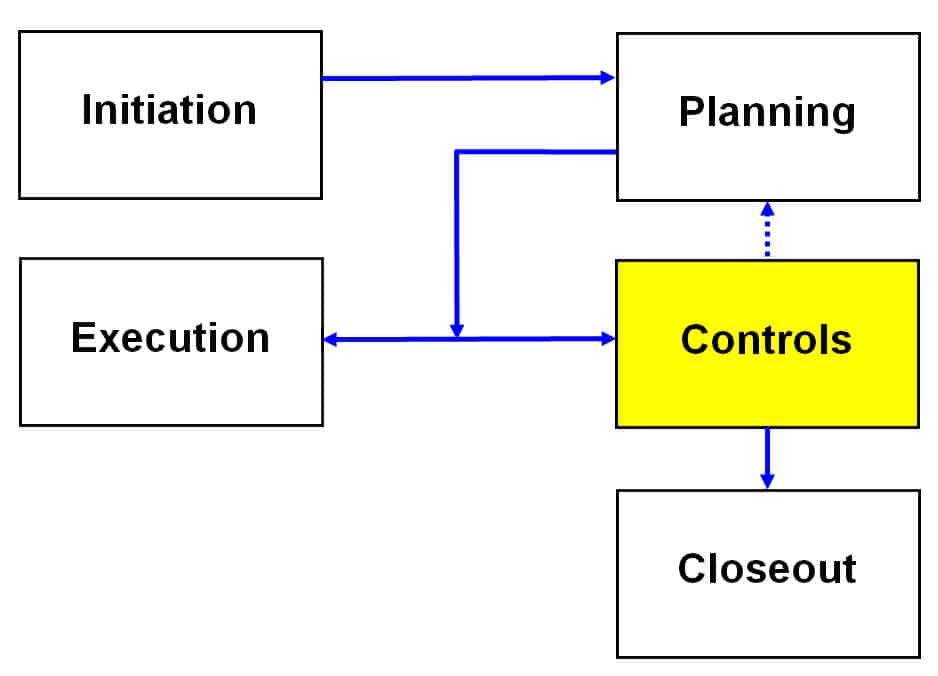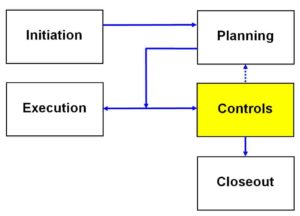Project Controls, Part 2- Controlling Schedules and Budgets

This article presents ideas for monitoring and controlling project schedules and budgets.

Project Controls: Schedule
- Decide to track by table, chart, status report, or project software, and how often.
It doesn’t matter how you monitor progress against the intended schedule, just make sure you do it, and that you do it at the subtask level (each element of the work breakdown structure [WBS]).
- Frequency of tracking as per the project plan.
Your project management plan should have specified your frequency of tracking the team’s progress under normal conditions. Weekly checks will work for most projects. When your schedule is slipping, or at critical times, daily or more frequent tracking might be required.
- Input sources
You are trying to determine the physical percent complete. The dollars spent and/or labor hours expended are irrelevant. You and your team (including contractors) need to be making honest assessments of the percent completed for each WBS element.
- Implement corrective action for variances (see the future article for getting back on track).
Project Controls: Tracking the Schedule
If you are using a Gantt chart to keep your team members informed, update the Gantt chart as necessary, and distribute it to the team, including contractors (as a controlled document – give it a date and require the recipients to acknowledge receipt).
Tracking the Budget
- Track expenditures by company computer or spreadsheet.
Again, it doesn’t matter how you monitor expenditures against the intended “burn rate,” just make sure you do it.
- Frequency and breakdown of tracking.
Your project management plan should specify your frequency of tracking expenditures. Weekly checks will work for most projects, but at critical times, more frequent tracking might be required. Your company’s accounting system, and the accounting systems of subcontractors and vendors, can delay availability of precious cost data. Work with the accounting managers to identify interim collection and reporting measures, or collect your own information and create interim spreadsheets if necessary.
- Review timesheets, expense accounts, in-house charges, subs, vendors, approve invoices.
You cannot depend on accounting/administrative employees to catch erroneous charges to your project. They do not have sufficient familiarity with your project.
- Control other company departments or offices.
You must have the same authority to reject work from in-house providers as you would to reject work from external providers. Establish this fact up front, (preferably in writing), before you agree to have them work on your project. If your company has a history of other departments and offices not performing as expected, discuss your options with your boss. This could be an excellent continuous improvement initiative. One option is to push to outsource the work if the in-house providers will not guarantee results.
- Realize your company accounting system may not show everything.
If your computer tracks labor by a multiplier on direct labor cost, but you will bill the customer by labor category rates, or vice versa, your picture of the dollar burn rate will be close, but slightly off. In a competitive business environment, where profit margins are low, you might accidentally spend half the profit trying to produce deliverables better than actually required, or you might under spend, thinking the budget is gone, and leave the customer wanting for higher quality. Query your accounting manager for exactly how the accounting system operates and possible ways to obtain exact information between invoice cycles.
- Committed costs are like outstanding checks.
These are charges that you have authorized for contractors, subcontractors, and vendors to charge against your project, but their invoices to you have not arrived. You had better keep track of them. Hopefully, your company accounting system can track them for you as you place the orders. If so, get copies of the orders to your accounting manager. If not, devise your own tracking spreadsheet.
- Monitor accounts payable (AP) and accounts receivable (AR)
AP is important to you because you want to keep your best suppliers happy, and willing to work for you again. AR is important because a late payment might indicate dissatisfaction of which you were previously unaware. It is possible your invoice to the customer was lost (happened to me more than once), which is also a situation you need to correct. If the customer is not paying due to questions about portions of the work, your contract likely requires they pay all undisputed charges by the originally agreed upon payment date.
- Close tasks and subtasks to cost accrual as they complete.
Many accounting systems allow you to close tasks and sub-tasks to accruing additional charges. As milestones are met, and the team moves on to subsequent elements of the WBS, they sometimes forget to use the new numbers on timesheets and expense reports. Close invalid tasks and subtasks to labor the next week, and close them to other direct costs (ODCs) in a couple of weeks, after external charges have arrived. If a valid late charge hits, it only takes a few seconds to re-open the task and close it again in the accounting system.
Next Article in This Series: The next article discusses procurement, earned value, and presents a project quiz.
Category: Business Growth & Strategy
Tags:

